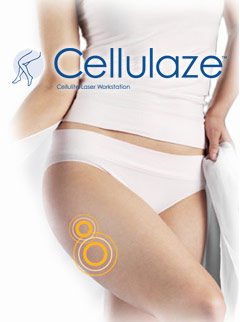Revolutionizing the Treatment of Cellulite
Cellulaze attacks the root causes of cellulite with a faster, more effective treatment

For years, women have tried countless topical and non-invasive solutions to get rid of dimpled skin with limited to no results. But as a 2012 breakthrough technology, Cellulaze is the world’s first minimally-invasive medical device designed to reduce the appearance of cellulite with longer lasting results after a single treatment.
Hedden Plastic Surgery is one of the first offices in the Birmingham-Hoover, Alabama area to offer the Cellulaze laser cellulite treatment.
A recent survey of more than 1,000 women reported that 79% admitted to wearing clothes that cover their cellulite. Commonly misconstrued as a fat problem, cellulite’s true source begins with the skin and plagues up to 85% of women at one time or another.
For more information about this new technology for cellulite reduction, please contact Hedden & Gunn Plastic Surgery at 205-980-1744.
Cellulaze is in a class of its own for cellulite reduction
Cellulaze is unlike any other cellulite treatment. It is the first of its kind to treat the root causes of cellulite underneath the surface of the skin. The device uses a tiny laser fiber to decrease the “cottage cheese” appearance of bulges and dimples, while using targeted heat to increase the elasticity and thickness of the skin for smoother looking thighs.
Nearly 4 years of clinical research puts Cellulaze in a class all its own as a single-treatment aesthetic procedure that treats the physiological structure of cellulite. By restoring the normal structure of the skin and underlying connective tissue, one clinical study showed that a single Cellulaze treatment provided results lasting longer than 1 year with a 94% patient satisfaction rate. Patients usually see improvements within a few weeks, with the most significant results continuing to develop in the months following the procedure.
